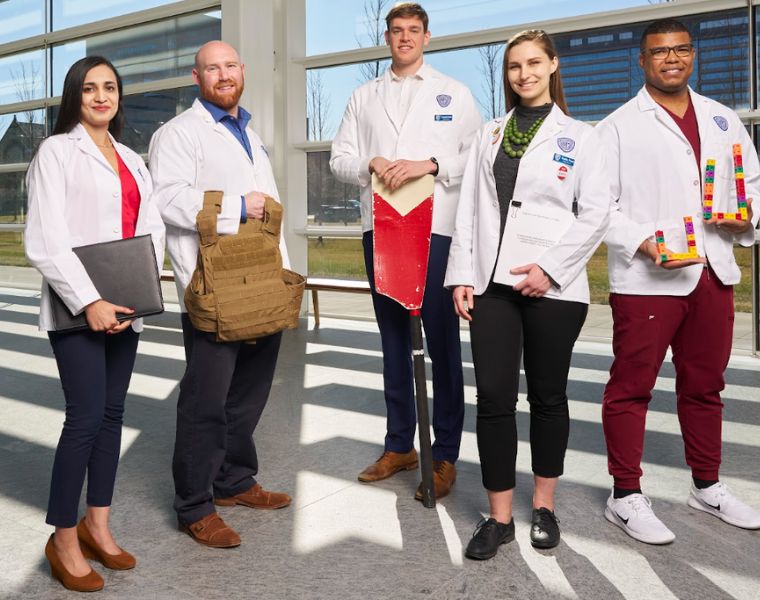This article originally appeared in the spring/summer 2023 edition of Think magazine. This summer, The Daily will share some of the articles from the latest edition of the magazine. View more stories at case.edu/think.
As mortar fire flew toward his military base, Luke Flint sat in a cramped bomb shelter in Afghanistan, his head down. Using his cellphone for light, he began studying—not for a mission, but a medical school admissions test.
“I didn’t want to sit in a bomb shelter for 1½ hours and waste that time,” he explained.
Now a first-year medical student, Flint is one of Case Western Reserve University’s “bent arrows,” a term applied to those whose paths are less direct than many of their peers.
John Caughey, MD, coined the term nearly 80 years ago. As the medical school’s first assistant dean of students, he pioneered the recruitment of such nontraditional applicants.
“Our school was one of the first to really start building diverse classes with people who wrote different chapters in their lives” before choosing to become physicians, said Lina Mehta, MD, associate dean for admissions and a professor of radiology. Whatever twists and turns they may take on their way to medical school, she said, “they’re going to ultimately hit their target.”
They also bring skills and perspectives—not to mention a degree of maturity—that enrich the educational experience for themselves, their peers, instructors and future patients.
For Flint, juggling the rigors of medical school and the hubbub of life with kids can be tough. But perspective is always close at hand.
“I think back to studying by cellphone light in a bomb shelter,” he said. “I have gone through way too much to turn back now.”
Read the stories of Flint and some of his fellow bent arrows.

